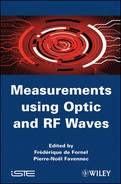Chapter 5
Passive Remote Sensing at Submillimeter
Wavelengths and THz1
5.1. Introduction
During recent years, considerable progress has been made in instrumental techniques and the physics of heterodyne receivers, in particular for submillimeter wave radioastronomy where high detection sensitivity has been reached up until several THz. Today, the observations are rather limited by the quality of the sites because of electromagnetic noise and atmospheric absorptions (Figure 5.1). The advances in receiver technologies justify the choice of sites on high mountains and the use of airplanes, stratospheric balloons or satellites. ALMA (Atacama Large Millimeter Array), the most advanced ground observatory and HERSCHEL, the largest and only space facility dedicated to the submillimeter and far infrared part of the spectrum, include both superconducting heterodyne receivers and will provide an unprecedented combination of sensitivity, angular resolution and spectral resolution at the shortest radio wavelengths during the current decade1.
Applications of these submillimeter radiometers using heterodyne detection largely exceed the field of radioastronomy and also concern planetology like physicochemistry of cometary gases and planetary atmospheres (Mars, etc.), remote sensing and weather forecasting by satellite (vertical survey of the atmosphere in the presence of cloud cover) and the study of the minor components of the atmosphere (limb survey). There are also civil and military applications, such as THz medical imaging, safety control and gas analysis for the environment.
5.1.1. Earth atmosphere and the radioelectric spectrum
From the ground, the spectral areas between the absorption lines (especially due to oxygen and water vapor), constitute several windows which are less and less transparent as the frequency increases. Beyond 300 GHz there are many absorption lines (mainly due to the atmospheric minor components) only detectable from airborne instruments.
Figure 5.1. Measurements of the atmospheric transmission with a Fourier transform spectrometer (FTS) covering the band from 100 GHz to 1.6 THz with a resolution of 5GHz (black histogram). Site of the large interferometer ALMA at 5,400 m of altitude (Atacama, Chile) (Pardo et al. 2001)
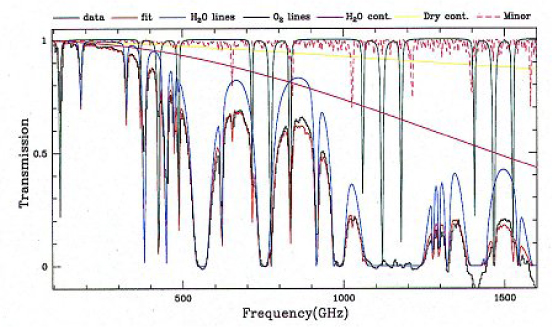
5.1.2. Application fields of heterodyne detection
The boudary between submillimeter-THz and the far infrared (FIR) domains is obviously arbitrary and variable. In fact, the distinction is often made by the techniques employed: heterodyne detection is used for the submillimeter-THz domain, while bolometric direct detection is used for the far infrared. Heterodyne detection receivers provide the highest spectral resolutions ( Δν/ν≥10−6, 10−7).
5.2. Submillimeter-THz low noise heterodyne receivers
The receiver sensitivity is mainly given by the noise performances of its input stages: beyond 150 to 200 GHz it is still difficult to directly amplify the signal without considerably reducing the sensitivity of the chain of reception. In fact, the sensitivity of the submillimeter-THz instruments is mainly determined by judicious choices of mixer technologies, according to planned applications (Figure 5.2).
Figure 5.2. Compared sensitivity tendencies (in equivalent noise temperature) of various types of submillimeter mixers, according to frequency (document INFOTEK/GEMO/LERMA/Observatoire de Paris)
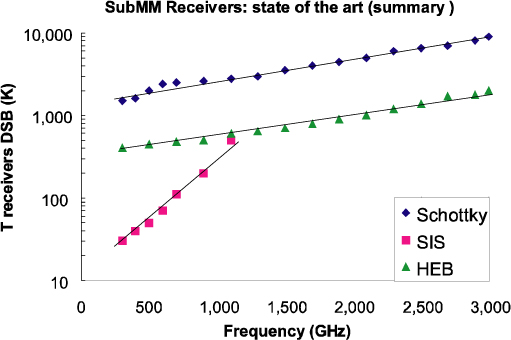
5.2.1. Mixers with AsGa Schottky diodes
Initially the “whisker-contacted” Schottky diodes were used in the instruments installed on the ground, and in space for astronomy and aeronomy at millimeter and submillimeter wavelengths. Lately, the difficulty encountered by micro-machining with increasing frequency has been circumvented by carrying out a structure without waveguide, where the diode is fed by means of an antenna collecting the radiation of the signal and the local oscillator through quasi-optical devices (thick lenses or reflectors). The current application of this type of open structure mixer is in the submillimeter field up to more than 4 THz (Figure 5.3).
Figure 5.3. THz open structure mixer “FARRAN” (FARRAN technologies company, Cork, Ireland)

In order to reduce the assembly costs, to increase the reliability and the reproducibility of the heterodyne receivers for space applications in millimeter and submillimeter waves, two major changes appeared in the design of the radiometers functioning at the ambient temperature.
The “whisker-contacted” Schottky diodes are now advantageously replaced by the planar diodes, mainly integrated in sub-harmonically pumped mixers up to 2 THz for satellite instruments for the Earth observation, meteorology and planetary atmosphere studies.
In addition, the planar diode technology, which has been progressing well in recent years and makes it possible to minimize the extrinsic parasitic elements (contributing to limit the performances of the devices), is now integrated on thin membranes to limit the substrate influence (dispersion, losses) in the THz field.
These technologies will allow us to produce integrated submillimeter receivers (MMIC type) and to reach the greatest sensitivities up to several THz (Figure 5.4).
Figure 5.4. JPL Mixer at 2.5 THz: circuit and diodes on Si membranes (document JPL/Caltech, NASA, CA, USA)
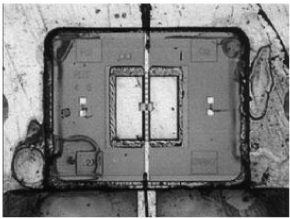
5.2.2. Mixers with superconductors (SIS, HEB)
In order to obtain the highest sensitivity, to reduce the observational time and to limit the size of the telescopes, the community of instrumentalists for astrophysics set-up the means of developing heterodyne receivers using superconducting mixers. The SIS (Superconductor-Insulator-Supraconductor) tunnel junction using Nb and with sub-micrometric surface area can provide sensitivities close to the quantum noise level up to 700 GHz (frequency limited by the gap of the material) and which can be extended until THz, but with a significant reduction of sensitivity.
Ultimate performances can currently reach up to 1.4 THz with the use of junctions with new superconductor materials, such as NbTiN (Salez et al., 1997). However the supra-THz field was recently explored (until 5THz or more) using mixers based on another physical mechanism: the HEB (hot electrons bolometers), made up of superconducting nano-bridges (Nb, NbN and possibly SHTc) (Tong et al., 2000).
SIS or HEB mixers must be cooled below the critical temperature of the used superconductor (4 K or often less, towards 2 K), which can pose problems of autonomy for use on not very accessible sites like high mountains, airborne or space platforms.
Integrated broad band receivers with SIS junctions: The use of superconductive multi-junctions or long junctions are also the subject of R & D actions (Chung and Salez, 1999; Salez et al., 2000) to increase the reception bandwidth or to create submillimeter sources. The planar technologies for SIS and HEB products encourage us to develop quasi-MMIC receivers integrating several functions (SIS mixers, SIS flux flow oscillators (FFO), printed vivaldi, dipoles or slot antennas).
These technologies will facilitate the creation of multipixels receivers for focal plane imagery. A 440 GHz, two channel prototype is under development at LERMA (Observatoire de Paris) (Figure 5.5).
Figure 5.5. 440 GHz two pixel superconductive receiver prototype with antennas, couplers, mixers, local oscillators integrated in the same (3mm × 3mm) circuit (Lerma-OP)

HEB THz Camera: The development of a HEB camera around 2.5 THz using superconducting NbN micro-bridge on Si3N4 or Si thin membranes, with the thickness from 1 to 3 μm, is underway at LERMA (Figure 5.6) – with the collaboration of the University of Moscow, the LAAS in Toulouse and the University of Chalmers in Sweden (Baubert, 2005).
Figure 5.6. 2.5 THz 4 pixels HEB camera (Lerma-OP). a) Array of 4 double slot antennas and HEB, b) Zoom on HEB and double slot antenna – view through the 1.4 μm thick membrane

5.2.3. Local oscillator sources
Local oscillators (LO) still remain the critical elements of the heterodyne receivers in submillimeter waves, especially beyond THz. The LO power necessary to pump mixers with Schottky diodes (several mW) or with SIS junctions or HEB (less than a μW) is usually obtained by a solid state source towards 100 GHz followed by a chain of frequency multiplications using planar varactor diodes technologies (Maestrini, 2006; Crowe et al., 2005). These technologies can provide the minimum power necessary to the mixers up to 2 THz (Figure 5.7). The HBV (heterostructure barrier varactors) (David et al., 2002; Chusseau et al., 2005) developed at IEMN (Lille) and at Chalmers to create odd harmonics multipliers, are compatible with the “MMIC technology” applicable to the submillimeter receivers in space.
Figure 5.7. 1.9 THz tripler with schottky diode varactors on a thin membrane
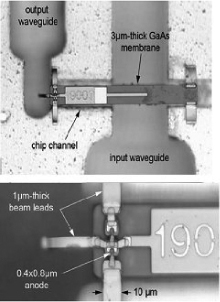
5.2.3.1. Design LERMA (OP) – LISIF (UPMC); technology from JPL –NASA
Flux-flow oscillators (FFO) with superconducting Nb multi-junctions (Chung and Salez, 2000) allow us to reach frequencies of about 700 GHz in direct oscillation and probably beyond THz in harmonic mode. The very low output power of these components, often requires the use of multiple junctions for power addition. However, the planar technology of these components opens up possibilities to integrate several functions on the same substrate (see SIS integrated receivers).
Beyond THz, carcinotrons (BWO) and FIR lasers pumped by CO lasers gradually yield to “all solid state” technologies implementing AsGa photo-mixers (carrying out the beat of two optical laser diode sources). Technologies of this type are under development at MIT, JPL, IEMN, MPIfR, etc. (Peytavit et al., 2000; Lippens, 2007). Recent developments of new laser structures QCL (quantum cascade laser), which are making it possible to directly generate a CW signal in the THz range, are proving to be of great interest for space applications (Betz et al., 2006).
5.3. Submillimeter – THz applications for astronomy and astrophysics
The instruments located on the ground see their limitations in the atmospheric windows in the lower part of THz. The sensitivities are limited by absorptions related mainly to the water vapour contents of the atmosphere (see Figure 5.1). Submillimeter radiotelescopes are thus established on high mountain sites (IRAM at 2,400 m in the “French Alps” and at 2,800 m in the “Sierra Nevada” in Spain; the CSO in Hawaii at 4,500m and ALMA in Chile at 5,400 m (Figure 5.8)).
Figure 5.8. ALMA project : large millimeter-submillimeter wave interferometer (with 64 telescopes covering 30 to 900 GHz), at Atacama, Chile, 5,400 m (artistic view, ESO)
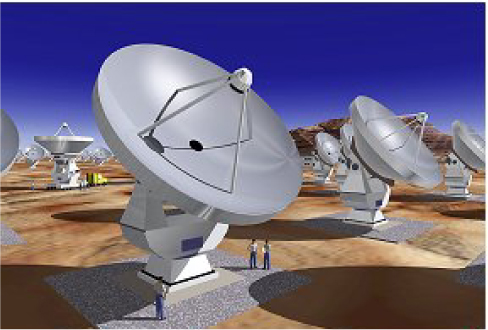
5.3.1. Airborne or stratospheric balloon observatories
The first attempts allowing us to circumvent the atmospheric absorptions consist of using stratospheric airborne observations, with an airplane at an altitude of 12 km (KAO/NASA in the past, then SOFIA/NASA-DLR project, on a modified Boeing 747 airplane, Figure 5.9), or with balloons flying at an altitude of around 40 km like PIROG 8 (Febvre et al., 1997), which is a SSC-CNES-ESTEC-LERMA-OP experiment launched by CNES from “Air sur Adour”, France, in September 1997 (Figure 5.10).
Figure 5.9. SOFIA, submillimeter-FIR observatory on Boeing 747, artist-view (document NASA-DRL)
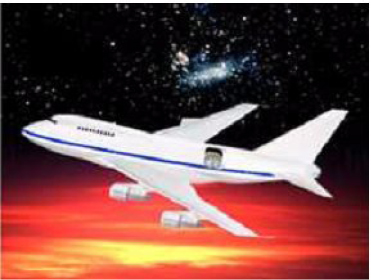
Figure 5.10. PIROG 8, 420–440 GHz heterodyne spectrometer for a stratospheric balloon-borne experiment (SSC-CNES-ESTEC-LERMA-OP, launched from “Air sur Adour”, France, September 1997)
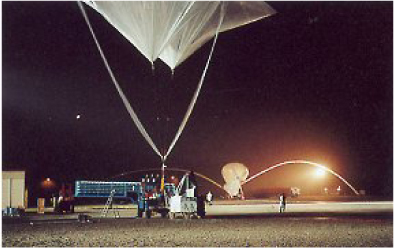
5.3.2. Space observatories
Following the American satellite SWAS (Figure 5.11), the first European satellite (ODIN) with a submillimeter wave heterodyne receiver on board was launched in February 2001 from Russia. Both use “whisker contacted Schottky diodes” cooled down by cryogenerators towards 60 and 20 K.
Figure 5.11. SWAS satellite, artist-view (NASA,USA)
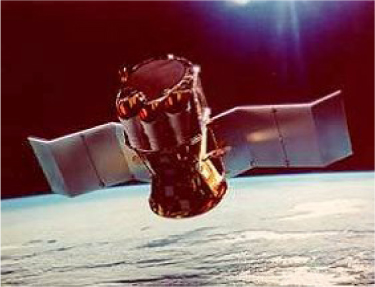
HERSCHEL, the ESA far-infrared space observatory (Figure 5.12), will be launched at the end of April 2009 and will reach in less 6 months its orbit around the second Lagrangian point (L2) located 1.5 million km from the Earth.
Figure 5.12. HERSCHEL space observatory (HSO, ex FIRST); ESA-SRON document
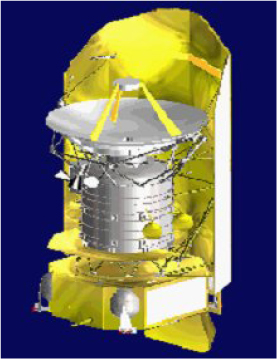
HERSCHEL Space Observatory (HSO) launched by Ariane 5 in May 2009, for the Lagrange point L2 located at 1.5 Mkm from the earth, carry a 3.6 m diameter Cassegrain telescope, two FIR direct detection instruments (PACS and SPIRE) and a very high spectral resolution heterodyne receiver (HIFI) (de Graauw et al., 07). The cooling is carried out by a large liquid Helium cryostat (tank of 3,500 L).
The HIFI heterodyne spectrometer contains 6 channels covering the frequency bands from 0.5 to 2 THz. The extremely low levels of energy flux to measure (in the order of 1 Jansky, i.e. 10−26 W.m−2Hz−1) require superconducting receiver technology. Heterodyne detectors (SIS and HEB mixers) are cooled down to 2 K and are directly connected to cooled HEMT amplifiers for IF low noise pre-amplification. Passively cooled semiconductor varactor multiplier chains are used as LO. The HIFI spectrometers are made up of digital and acousto-optic correlators to allow wide band and high spectral resolution analysis.
Freed from any atmospheric limitation, HIFI will allow the study of a multitude of objects in the interstellar molecular clouds by carrying out a complete cover of the spectral bands in order to perform chemical analysis of these clouds and obtain information about star formation.
The HIFI channel 1 SIS mixers (Figure 5.13), covering the 480–640 GHz frequency band with vertical and horizontal polarizations, have been developed at the Observatory of Paris (LERMA-GEMO) with the collaboration of the IRAM in Grenoble. Several years of development were needed to realize this space receiver combining a very high sensitivity close to the quantum limit (Delorme et al., 2005), and a near 30% instantaneous bandwidth without any adjustable matching element.
Figure 5.13. Herschel HIFI SIS mixer channel 1, covering the band 480–640 GHz (LERMA-GEMO, OP). External and internal views
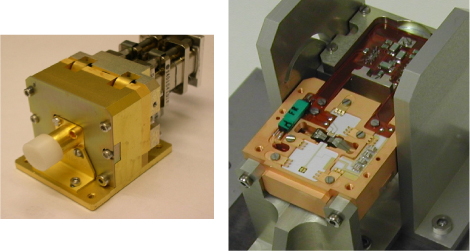
Figure 5.14 below presents the “noise/frequency” measurements obtained with a channel 1 SIS mixer. The sensitivity reached by this channel expressed as equivalent noise temperature (in Kelvin), is the highest ever published.
Figure 5.14. Noise performances of the HIFI instrument channel 1 mixer for the HERSCHEL space observatory (measurements LERMA –OP)
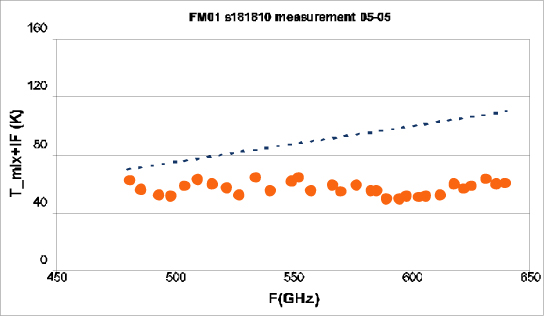
Other NASA, ESA or Russian space projects are in preparation to increase the spatial resolution in the submillimeter and THz astrophysical domain. The main space missions are “Millimetron” (Russia) with a 12 m semi deployable telescope and FIRI (a far infrared interferometer of ESA with 2 to 4 antennas on either one or several platforms).
5.4. Submillimeter – THz remote-sensing applications to aeronomy and planetology
The sensitivity obtained with uncooled Schottky diode mixers (approximately hundreds of hυ/k) may be increased by a factor of 2 or 3 when the mixers are cooled down around 80 or 20 K. The sensitivity of superconducting mixers cooled towards 4 K or 2 K is limited mainly by the quantum background noise hυ/k. The technology and the complexity to apply these heterodyne receivers make their use on board operational satellites difficult. More than 10 years passed before aeronomy and planetology communities became convinced of the usefulness of these techniques and their applications: on temperature and water vapor vertical profile sounding, as well as limb profile surveys of minor components of the Earth's atmosphere and planetary atmospheres, study of comet gases, speed of the zonal and athwartship winds in the atmospheres, and that the space qualification of these systems can be carried out.
5.4.1. Atmospheric sounders
After ODIN (SSC) and MLS (NASA) the projects relating to the limb survey of the Earth's atmosphere are currently:
STEAM for “Stratosphere-Troposphere Exchange and climate Monitor” is an Odin heritage project, directed at “aeronomy“ mode. It takes up the “MOST” concept at 310–340 GHz to probe the high troposphere/low stratosphere and as on ‘”ODIN”’, it includes a channel of 500–600 GHz for the survey of the stratophere (O3 and ClO essentially) associated with an “OSIRIS” type optical instrument for the detection of the clouds and aerosols (also O3 and NO2). The platform would be similar to that of Odin.
EOS-MLS (NASA) and ACECHEM (ESA) projects comprise additional channels in supra-THz (1.3 and 2.5 THz) intended to measure HF and OH molecules, whose significant role in the chemistry of the atmosphere was highlighted more recently.
Other future projects will also concern the athmospheric and surface nadir soundings (ice contained in clouds, etc.) for meteorogical studies and applications (CNES, ESA and Eumetsat missions).
5.4.2. Cometary and planetary probes
MIRO “Microwave Instrument on the Rosetta Orbiter” is the first millimeter and submillimeter heterodyne receiver on board the space probe ROSETTA (ESA), and has been launched by “ARIANE 5” in Mars 2004. After 10 years of interplanetary travel, it will observe for the first time several key molecules like CO, HO and CH3OH, which will be ejected and accelerated in the tail of the comet Gerasimenko (Encrenaz et al., 2001).
MEMO “Mars atmosphere Microwave Observer” is one of the projects suggested by ESA within the framework “Cosmic Vision”. It is a microwave sounder on the Mars orbiter, which will aim to characterize the dynamics and the composition of the atmosphere of Mars. It will measure the temperature and the water vapor profiles, the speed of the winds, and it will carry out analyses of certain key molecules (H2 O, CO, HDO, O3, etc.) in the frequency band 320–340 GHz. It will alternate series of nadir and the limb measurements of the Martian atmosphere (Gulkis et al., 2000).
Other ESA “Cosmic Vision” missions are now under evaluation at NASA and ESA: “Tandem”(TSSM) for Saturn and Titan, “Laplace”(EJSM) for Jupiter and Europa. These projects include a heterodyne submillimeter spectrometer (SMS) for the planetary atmospheric studies.
5.5. Conclusion
For the majority of Earth and planetary atmospheric observations, the sensitivity is not as critical as for astrophysics. A great number of significant molecular transitions can be observed up to 5 THz, with the sensitivity permitted by radiometers using semiconductor schottky diodes (uncooled or only passively cooled).
The remote sensing and its millimeter-wavelength applications in observation of the Earth and for the atmospheric studies have led to the development of more reliable and integrated planar technologies for high frequencies. This technological effort of miniaturization is continued in order to reduce complexity, mass and costs of the heterodyne receivers for space applications.
For astrophysics, the very high sensitivity and spectral resolution (R > 106) are necessary. In recent years, significant progress was made in sensitivity, bandwidth and reliability of SIS mixers up to THz and on HEB mixers beyond THz. The efforts are now related to the development of the local solid state oscillators in the field of THz, as well as of planar technologies containing superconductors. The latter, allowing large scale integrations, will open up possibilities for the development of THz heterodyne imaging receiver with a large number of pixels for the future space post-Herschel projects (years 2020–2030).
Without any doubt, these heterodyne receiver techniques are the most promising of this decade, for astrophysics (Herschel, ALMA) as well as for the atmospheric survey, planetology (MIRO, MEMO) and for aeronomy (EOS-MLS, STEAM, ACECHEM, etc.). The submillimeter and THz heterodyne receiver developments for the future will associate imaging with large telescopes or large space interferometers for the far infrared domain (FIRI, Millimetron, etc.) covering a wide part of the THz field.
The applications of submillimeter heterodyne radiometers largely exceed the field of radioastronomy and aeronomy, they also relate to atomic physics (survey of plasma in the accelerators), medical imaging (Siegel, 2006) and telecommunications (very high rate data transmission), etc. These developments, initially directed purely towards fundamental research may have important beneficial effects in the near future for industrial and military applications.
5.6. Acknowledgements
The activities presented here have been developed by different research institutes in the world including the LERMA (GEMO), which is supported by ESA, EEC, INTAS, CNES, CNRS, the french Ministry for Research and Observatoire de Paris. We thank all these organizations as well as the members of LERMA and all of our partners.
5.7. Bibliography
Baubert J., Superconducting Hot Bolometers Electron on thin membranes for SHAHIRA, PhD Thesis, LERMA, Paris, December 2005.
Betz A.L., Boreiko R.T., Williams B S., KUMAR S., Hu Q., Reno J.L., “The Quantum Cascade Laser as a Terahertz Local Oscillator”, Proc. of the Sixth Annual NASA Earth Science Technology Conference, Maryland, US, June 2006.
Chung M.-H. and Salez M., “Design and Analysis of a Hybrid Feed Antenna for a Flux- Flow Oscillator Integrated 460 GHz SIS Receiver,” Proc. 11th International Symposium on Space Terahertz Technology, Ann Aarbor, MI, US, May 2000.
Chung M.-H. and Salez M., “Numerical simulation based on as five-port model of the parallel SIS junction array mixer”, Proc. 4th European Conference on Applied Superconductivity, EUCAS ‘99, Sitges, Spain, September 1999.
Chusseau L., Lampin J.F., Bollaert S., Duvillaret L., Mangeney J., “THz active devices and applications: survey of recent researches”, 35 th EuMC, Proceedings, Paris, 2005.
Crowe T.W., Bishop W.L., Porterfield D.W., Hesler J.L., Weike R.M., “Opening the THz Window with integrated diode circuits”, IEEE journal of Solid State Circuits, vol 40, no 10, October 2005.
David T., Arscott S., Munier J.M., Akalin T., Mounaix P., Beaudin G., Lippens D.; “Monolithic Integrated Circuits Incorporating InP-Based Heterostructure Barrier Varactors”, IEEE Microwave and Wireles Components Letters, vol. 12, no 8, August 2002.
de Graauw T., Whyborn N.D., van de Stadt H., Beaudin G., Beintema D.A., Belitsky V., Cais P., Caux E., Gheudin M., Cros A., de Groene P., Emrich A., Erickson N.R., Gaier T.C., Gallego-Puyol J D., “Heterodyne receiver instrument for FIRST (HIFI): preliminary design”, Proc. SPIE, vol. 3357, p. 336–347, 1998.
Delorme Y., Salez M., Lecomte B., Péron I., Dauplay F., “Space-qualified SIS mixers for Herschel Space Observatory' S HIFI band 1 instrument”, Proc. 16th Int. Symp. on Space THz Technology, Gothenburg, Sweden, p. 445, 2005.
Encrenaz, T., Coradini A., Beaudin G., Crovisier J., Drossart P., Erard S., Germain B., Gulkis S., Langevin Y., Lellouch E., “The Mars flyby of ROSETTA: an opportunity for infrared and microwave high-resolution sounding”, Planetary and Space Science, vol. 49, no. 7, p. 673–687, 2001.
Febvre P., George S., Deschamps A., Lecomte B., Peron I., Olofsson G., “Description and performance of a heterodyne SIS receiver At 425/441 GHz for the PIROG balloon-borne experiment”, URSI, North American Radio Sci. Meet, Montreal; Canada., 13–18 July 1997.
Gulkis S., Forget F., Allen M., Beaudin G., Clancy T., Encrenaz T., Hartogh P., Janssen M.R., Riley A.L., “The Potential for Microwave Remote Sensing of the Martian Atmosphere and Surface from an Orbiting Spacecraft”, Workshop on Concepts and Approaches for Mars Exploration, abstract No 6, Houston, Texas, 18–20 July 2000.
Lippens D., “Sources and detectors at the THz frequencies”, CNRS Review, no. 73, 2007.
Maestrini A., “Frequency multipliers for local oscillators at THz frequencies”, Proc .4th ESA Workshop on Millimeter Wave Technology and Applications TSMMW2006/MINT-MIS2006, MilliLab, Espoo, Finland, 15–17 February 2006.
Pardo J.R., Cernicharo J., Serabyn E., “Atmospheric transmission at microwaves (ATM): an improved model for millimeter/submillimeter applications”, IEEE Transactions on Antennas a Propagation, vol. 49, p. 1683–1694, no. 12, December 2001.
Peytavit E., Mouret G., Lampin J.F., Mounaix P., Mollot F., Lippens D., “Frequency difference generation in the THz region using LTG-GaAs photodetector”, 8th International Conference on THz Electronics, 28–29 September 2000.
Salez M., Delorme Y., Munier J.M., Villégier J.C., Larrey V, Beaudin G., “Development of a waveguide/membrane 1.5 THz Mixer using NbN/AlN/NbN SIS junctions and AL embedding circuits”, in A. Wilson (ed.), The Far Infrared and Submillimetre Universe, ESA, Noordwijk, The Netherlands, p. 417, 1997.
Salez M., Delorme Y., Chung M.-H., Dauplay F., “Simulated Performance of Multi-junction Parallel Array SIS Mixers for Ultra Broadband Submillimeter Wave applications”, Proc. 11th Int. Symp. on Space THz Technology, Ann Aarbor, MI,US, May 2000.
Siegel P. and Dengler R. “Terahertz heterodyne receiver imaging”, International journal of Infrared and Millimeter Waves, vol. 27, no 4, April 2006.
Tong C.Y.E., Kawamura J., Hunter T., Dad D.C., Blundell R., Patt F., Goltsman G., Gershenzon E, “Successful Operation of 1 THz NbN Hot-Electron Bolometer Receiver”, Proc. 11th Int. Symp. on Space Terahertz Technology, Ann Aarbor, MI, US, May, 2000.
1 Chapter written by Gérard BEAUDIN.
1 See website of GEMO/OP-LERMA http://gemo.obspm.fr/ and CNES, ESA, NASA.
2 These mixers can be cooled towards 80 K or 20 K in order to appreciably increase their performances.
